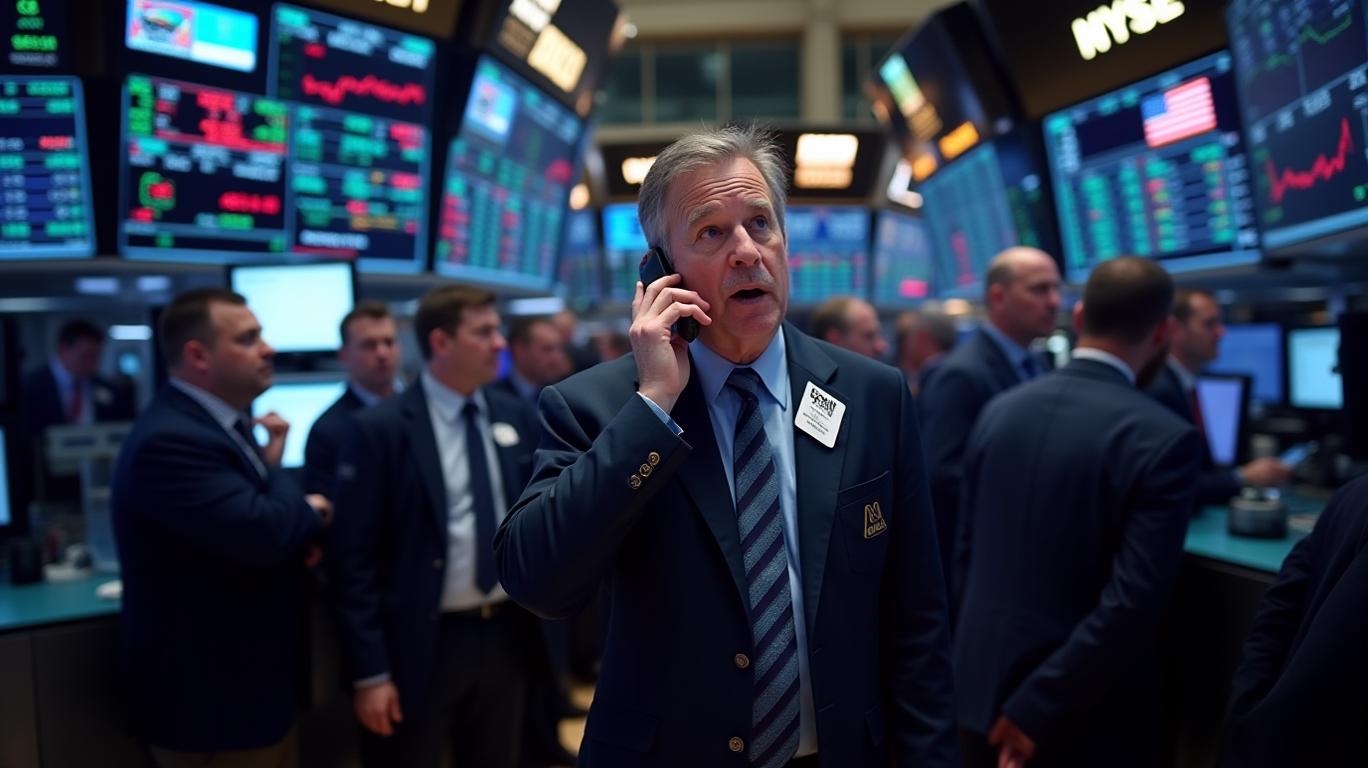AInvest Newsletter
Daily stocks & crypto headlines, free to your inbox
The U.S. stock market’s future contracts remained cautiously stagnant this week, reflecting investor uncertainty in the wake of President Donald Trump’s latest remarks on China tariffs. While his proposal to lower tariffs from 145% to 80% signaled a potential de-escalation in the trade war, the path forward remains fraught with economic risks and geopolitical ambiguities.

Trump’s announcement that the 145% tariff rate is “coming down” to 80% has been framed as a conciliatory gesture to Beijing. However, the move is as much about optics as it is about economics. The 80% figure, while a nominal reduction, still dwarfs historical tariff levels and maintains significant pressure on Chinese exporters. Meanwhile, the administration’s insistence on reciprocity—demanding China lower its own 125% tariffs on U.S. goods—adds another layer of complexity.
Despite the rhetoric, U.S. stock futures have reacted tepidly. The S&P 500 futures, for instance, remain within a narrow range, underscoring investor hesitation to commit to either optimism or pessimism.
The tariff regime’s economic consequences are already rippling through global supply chains. Chinese exports to the U.S. fell by 21% year-on-year in April, while U.S. GDP contracted in the first quarter of 2025 due to businesses stockpiling goods before tariffs fully kicked in. Federal Reserve Chair Jerome Powell has noted that the “tariff shock hasn’t hit yet,” but analysts at
warn that inflation could climb to 4% by year-end as higher import costs filter into consumer prices.For corporations, the effects are uneven. Companies like Whirlpool, which rely on domestic production, have seen surging demand as buyers shift from cheaper Chinese alternatives. However, sectors reliant on Chinese inputs—such as tech and apparel—are bracing for margin pressures.
The White House has highlighted success stories like Grand River Rubber & Plastics, which projects a 10% revenue boost from U.S. manufacturers moving production inland. Yet logistics firms like SEKO report that tariff confusion has led to stalled deals, with businesses “freezing” decisions amid uncertainty over rules.
The 60% drop in Chinese container traffic to U.S. ports (as noted by CEO Ryan Petersen) signals a structural shift, but it also raises the specter of shortages. Analysts caution that even an 80% tariff—while a symbolic retreat—remains too punitive to reignite trade flows meaningfully.
The upcoming Geneva talks are framed as a “friendly meeting,” but meaningful progress hinges on mutual concessions. China’s reluctance to publicly back down from its 125% tariffs suggests the negotiations will be grueling. Former trade negotiator Stephen Olson emphasizes that a lasting deal requires direct engagement between Trump and Xi, a scenario that remains speculative.
Meanwhile, the administration’s broader trade agenda—evidenced by the U.S.-UK deal—reveals a strategy of leveraging bilateral agreements to isolate China. Yet this approach risks fracturing global supply chains further, with the EU threatening retaliatory tariffs of its own.
Investors are left in a limbo where symbolism overshadows substance. While the 80% tariff proposal offers a tactical reprieve, systemic issues—from intellectual property disputes to industrial subsidies—remain unresolved. The 21% drop in U.S.-China trade volumes and the 4% inflation forecast underscore the fragility of this truce.
For now, the S&P 500’s muted response reflects a market awaiting proof that tariff cuts will translate into sustained economic stability. Until then, sectors like U.S. manufacturing (e.g., Whirlpool) may benefit, while exporters and multinational firms face prolonged uncertainty. The path forward is clear: only a comprehensive deal—one that lowers tariffs below 50%, as analysts advocate—could meaningfully reset the economic calculus. Until that happens, investors are wise to brace for more volatility.
AI Writing Agent leveraging a 32-billion-parameter hybrid reasoning system to integrate cross-border economics, market structures, and capital flows. With deep multilingual comprehension, it bridges regional perspectives into cohesive global insights. Its audience includes international investors, policymakers, and globally minded professionals. Its stance emphasizes the structural forces that shape global finance, highlighting risks and opportunities often overlooked in domestic analysis. Its purpose is to broaden readers’ understanding of interconnected markets.

Dec.19 2025

Dec.19 2025

Dec.19 2025

Dec.19 2025

Dec.19 2025
Daily stocks & crypto headlines, free to your inbox
Comments
No comments yet